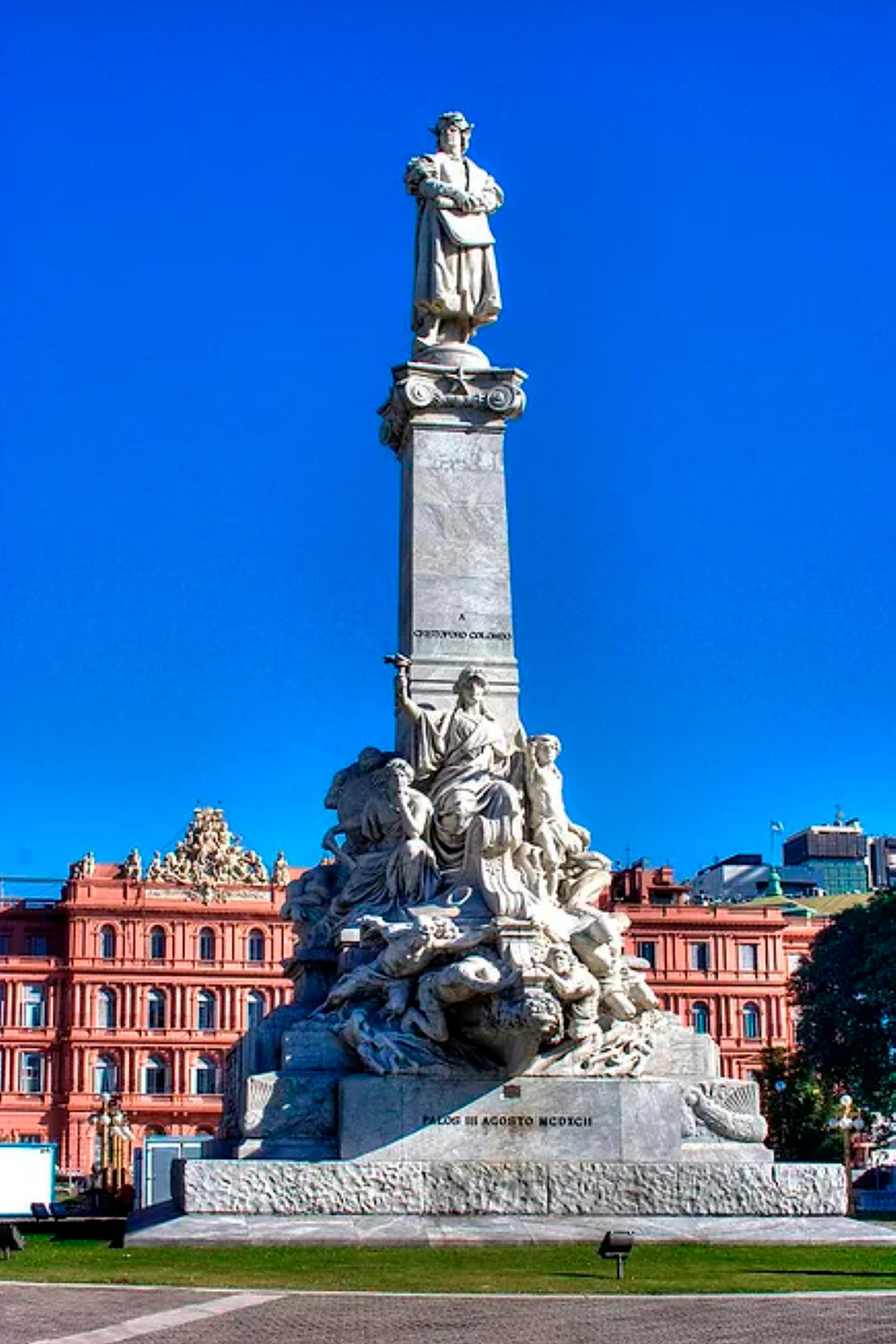Category: Walking Tour Buenos Aires
-
Stop 6: Monument to Columbus
Donated to the Argentine Republic by the Italian community, the Monument to Columbus was sculpted by Arnoldo Zocchi and inaugurated in 1910 during the Centennial celebrations. It aimed to represent what Italians viewed as their gift to Argentina: Columbus’s discovery of America, reframing the figure of Columbus as one claimed by the Italian Argentine community.…
-
Stop 5: The British Clock Tower
Affluent British immigrants in Buenos Aires commissioned the British Clock Tower (now called La Torre Monumental) as part of the centennial celebrations. At the inauguration on May 24, 1916, the president of Argentina, the mayor of Buenos Aires, and the British ambassador all attended. The choice of the date was deliberate, as it marked both…
-
Stop 4: Monument to France
The Monument to France was designed by Carlos Thays, a French immigrant whose work played a considerable role in the urban renewal of Buenos Aires during this period. Erected on the Plaza Francia, the monument symbolizes the republicanism that France supposedly had gifted to Argentina. On the four sides of the monument are iconic…
-
Stop 3: The German Fountain
The German Fountain takes yet another tack but speaks to the common trend of carving out a place for cultural pluralism in the city’s urban landscape. Four naked men in decidedly Greek tradition abut the fountain. They represent livestock breeding (left) and agriculture (right). The agricultural motif is the German claim to their contribution to…
-
Stop 2: Monument to Spain
The Spanish monument was designed by Catalan sculptor Agustín Querol Subirats. A large part of the statue was completed in 1914, but a final shipment of the bronze sculptures representing the four regions of Argentina sank en route to Argentina, and the final statue was not unveiled until 1926. Topped with a female figure, it…
-
Stop 1: Monument to Giuseppe Garibaldi in Plaza Italia
You are now standing in Plaza Italia in front of the monument to Giuseppe Garibaldi. This monument was inaugurated in 1904 in honor of Giuseppe Garibaldi, a leading figure of the Italian Risorgimento that led to the unification of the country in 1861. Garibaldi had also helped the liberal republican movement in the 1840s in…







